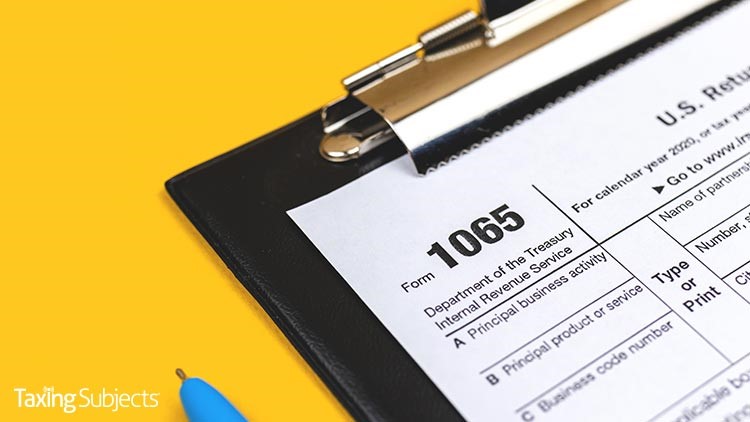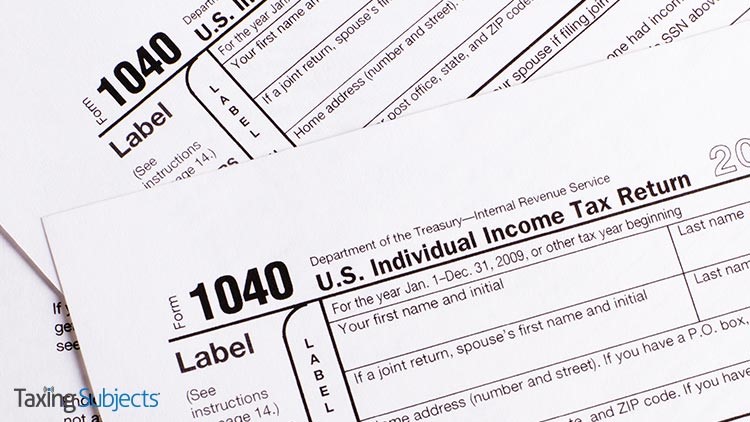by Ameritax | May 5, 2021 | Tax Tips and News
It was a wise man indeed who first warned us to “hope for the best, but prepare for the worst.”
The Internal Revenue Service is following in those footsteps by reminding taxpayers that spring begins a very active period for weather in the U.S. In light of that, May includes both National Hurricane Preparedness Week and National Wildfire Awareness Week.
It shouldn’t be a surprise that reviewing emergency preparedness plans makes a lot of sense right now.
For those who like to think “it can’t happen here,” the Federal Emergency Management Agency (FEMA) knows it can. In the past year, FEMA declared major disaster areas stemming from hurricanes, tropical storms, tornadoes, severe storms, flooding, wildfires, and an earthquake.
That’s why there’s no time like the present for individuals, organizations, and businesses to come up with an emergency plan or update the one they already have.
In case of natural disaster …
The key to getting through any natural disaster is the ability to think ahead—before there’s trouble. How would an individual taxpayer or business be able to recover after a disaster? What documents would they need if their files were missing, damaged, or destroyed by the weather event?
Recovery can depend on the individual or business taxpayer’s ability to produce documentation proving insurance claims, qualifying for disaster grants and other relief.
The IRS has some tips that can help taxpayers to recover quicker economically if they are hit by a natural disaster.
Secure key documents
The story of our lives is written in the vital documents we keep. That’s why taxpayers need to keep original documents such as tax returns, birth certificates, deeds, titles and insurance policies inside waterproof containers that are in turn kept in a secure space.
Duplicates of these documents should be kept in a separate location other than the taxpayer’s home or business. Another option is to scan them and copy the data onto electronic storage media such as a flash drive.
Reconstructing records after a major disaster might be required for tax purposes, to get federal assistance or to receive insurance reimbursement. Those who have suffered partial or total loss of their records should go online to the IRS’ Reconstructing Records webpage as a first step in the process.
Document your valuables and equipment
Once the weather event is over, home- or business-owners will need some way to back up their claims for insurance or tax breaks. The best way is to record all property beforehand, but especially any expensive or high-value items. Whether it’s a simple list, a spreadsheet, or a video record, the compilation should be kept with the important documents and a copy kept off-site as well.
Publication 584 has IRS disaster-loss workbooks that can help taxpayers and businesses assemble their lists of personal property or business equipment.
Fiduciary bonds for employers
Business owners have more to think about than just protecting their documents in the event of a natural disaster. If they use a payroll service, employers should follow the IRS’ advice and ask their payroll provider if it has a fiduciary bond in place.
The bond could offer the employer a layer of protection if the payroll service defaults.
The IRS urges all employers to choose their payroll service providers carefully.
How can the IRS help?
When FEMA declares a location to be a federal disaster area, the IRS can postpone specific tax filing and payment deadlines for those taxpayers who either live or have a business in the disaster area.
Such relief is automatic; there’s no need to call the IRS and request it. The agency can identify qualified taxpayers by their address of record and applies the stated relief when processing the return.
Anyone impacted by a disaster who has tax-related questions can call the IRS at 866-562-5227 to connect to an IRS specialist trained to handle disaster-related issues.
If a taxpayer suffered an impact from a disaster but didn’t live within the federally declared disaster area, they can call the same number, 866-562-5227, to see if they qualify for disaster tax relief or other options.
Complete disaster assistance and emergency relief details are available for both individuals and businesses on the IRS’ Around the Nation webpage on IRS.gov.
FEMA’s Prepare for Disasters webpage includes information to Build a Kit of emergency supplies.
Here are some other disaster preparedness sites that may prove useful:
Source: As hurricane season nears, IRS reminds people to prepare for natural disasters
– Story provided by TaxingSubjects.com
by Ameritax | May 4, 2021 | Tax Tips and News
Sometimes, taxpayers find themselves with a tax bill they just can’t satisfy. The taxpayer is willing to pay, but the bottom line is more than they can afford. Circumstances like this are made for compromise; or more precisely, an offer in compromise.
Meeting in the middle …
“An offer in compromise is an agreement between a taxpayer and the IRS that settles a tax debt for less than the full amount owed,” the IRS explains. “An offer in compromise is an option when a taxpayer can’t pay their full tax liability. It is also an option when paying the entire tax bill would cause the taxpayer a financial hardship.”
As you might expect, all offer-in-compromise requests are closely scrutinized. So, the IRS created the free Offer in Compromise Booklet to provide easily accessible information about eligibility, associated fees, and how arrangements affect other tax-related items, like refunds.
How do taxpayers get the offer in compromise process started?
Generally, taxpayers, whether individuals or business owners, must first make an appropriate offer based on what the IRS considers their true ability to pay. Acceptance is not automatic; unrealistic offers can be rejected by the IRS.
Before an offer can be considered, the taxpayer must:
- File all tax returns they are legally required to file,
- Have received a bill for at least one tax debt included on their offer,
- Make all required estimated tax payments for the current year, and
- Make all required federal tax deposits for the current quarter if they are a business owner with employees.
Also remember that the IRS generally won’t accept an offer in compromise from anyone who actually has the ability to pay the tax debt in full, either through an installment agreement or equity in assets.
When it reviews applications, the IRS considers the taxpayer’s unique situation and any special circumstances that may affect their ability to pay in addition to their income, expenses and asset equity.
Currently, the application fee for an offer in compromise is $205, but the IRS says it can be waived if an applicant “[meets] the definition of a low-income taxpayer.”
The IRS’ Offer in Compromise Pre-Qualifier Tool can help a taxpayer determine if they are eligible to make an offer to settle their tax debt. The taxpayer is taken through a series of questions that clarify their individual tax situation.
Sources: An offer in compromise may help some taxpayers settle their tax bill; Offer in Compromise Pre-Qualifier tool; Form 656 Booklet: Offer in Compromise
– Story provided by TaxingSubjects.com
by Ameritax | May 1, 2021 | Tax Tips and News
Partnerships and S corporations that will have to report “international tax matters” in 2022 can now review the new draft releases for Schedules K-2 and K-3. The IRS today announced the early release drafts, noting that instructions would follow sometime in the summer.
“The redesigned forms and instructions will also give useful guidance to partnerships, S corporations, and U.S persons who are required to file Form 8865 with respect to controlled foreign partnerships on how to provide international tax information,” the IRS wrote about the new schedules. “The updated forms will apply to any persons required to file Form 1065, 1120-S, or 8865, but only if the entity for which the form is being filed has items of international tax relevance (generally foreign activities or foreign partners).”
It’s worth noting that the changes specifically target “items of international tax relevance.” The rest of the K-2 and K-3 will be the same for passthroughs that do not have those interests.
Where can I find the early draft releases of the new Schedule K-2 and Schedule K-3?
The new schedules K-2 and K-3 can be found on the IRS’s “Draft Tax Forms” webpage. After navigating to the page, you’ll find the K-2 and K-3 sorted by the associated form:
Once available in the summer, the instructions will also be posted to the draft forms page. (If you’ve navigated away from this blog and have a hard time finding the IRS page, search for “IRS draft tax forms” on Google.)
What happens to affected passthrough entities that do not use the new Schedules K-2 and K-3 in 2022?
Invariably, some passthrough businesses will fail to use the new Schedules K-2 and K-3. And, as you might have guessed, the IRS wants to limit that number: “To promote compliance with adoption of Schedules K-2 and K-3 by affected pass-through entities and their partners and shareholders, the Treasury Department and the IRS intend to provide certain penalty relief for the 2021 tax year in future guidance.”
Source: IR-2021-98
– Story provided by TaxingSubjects.com
by Ameritax | Apr 30, 2021 | Tax Tips and News
This tax season, like so many before, a lot of filers could use a little extra time to get the job done. And while it’s true that anyone can request an extension of time to file beyond this year’s May 17 deadline, some taxpayers don’t even have to ask in order to have more time to file.
According to the IRS, over 16 million filers will get an extension “by filing a form or making an electronic payment.” But at least three groups won’t have to do anything to receive additional time to file.
Here’s a breakdown.
Winter Storm Disaster Victims
Old Man Winter did his worst to residents of Texas, Louisiana and Oklahoma recently. Because of near- and sub-zero temperatures, snowfall and other record conditions, portions of the three states were declared federal disaster areas.
Residents of any county within a federally declared disaster area in any one of the three states is entitled automatically to an extension of time to file, putting their tax returns due on June 15. This date applies to filing returns and paying any tax due.
For disaster victims in an area qualified for FEMA’s Individual Assistance program, there’s no need to contact the IRS to qualify. All the applicable extensions and other disaster-related relief are applied, based on the taxpayer’s address of record on file with the IRS.
This relief includes more time for making contributions to IRAs and other retirement plans for the 2020 tax year, and making estimated tax payments for 2021.
Relief is also available to those living outside the disaster area in certain circumstances.
For example, these taxpayers might live outside the disaster area but have a business within the disaster area, have tax records within the disaster area or are assisting in disaster relief efforts.
Check out the Around the Nation page on IRS.gov for details on all available relief.
Taxpayers in a Combat Zone
The Internal Revenue Service gives soldiers and eligible support personnel who are serving in a combat zone at least 180 days after they leave the combat zone to file tax returns and pay any tax due. Publication 3, Armed Forces’ Tax Guide, has a complete list of designated combat zone locations.
Military and support taxpayers in combat zones also have more time for other tax-related functions, such as making contributions to an IRA. Since various circumstances can affect what extensions are available to an individual, refer to Publication 3 for guidance.
Taxpayers Living Outside the U.S.
U.S. citizens and resident aliens living and working outside the U.S. and Puerto Rico also get a break on the filing deadline. They have until June 15 to file their 2020 returns and pay any tax due.
The June 15 deadline also applies to U.S. military forces on duty outside the U.S. and Puerto Rico, but who are not serving in a combat zone. The IRS recommends taxpayers include a statement with their tax return explaining which situation applies to them.
Taxpayers abroad should note that while they get an extension of time to file and pay, there’s a penalty for late payments. Interest will be charged at 3 percent per year, compounded daily, to payments received after the May 17 deadline.
Publication 54, Tax Guide for U.S. Citizens and Resident Aliens Abroad, has more information on special rules for U.S. taxpayers living outside the country.
Other Taxpayers
The usual method for obtaining an automatic extension still applies for taxpayers who aren’t in these three special groups is to simply submit a request for an automatic extension to extend a taxpayer’s filing deadline until Oct. 15. (Payment of any tax due, of course, is still due by May 17.)
Other than filing Form 4868 to request an extension, taxpayers can pay their tax due electronically to get an extension to file. Online payment sites like Direct Pay or the Electronic Federal Tax Payment System (EFTPS) can be used, as well as debit or credit cards.
Check out all the payment options at IRS.gov/payments.
Source: IR-2021-96
– Story provided by TaxingSubjects.com
by Ameritax | Apr 29, 2021 | Tax Tips and News
The Internal Revenue Service has kept taxpayers’ mailboxes busy for months now, sending out notices to taxpayers about the various Economic Impact Payments that have been issued.
The agency was required to mail a notice to the last known address of each Economic Impact Payment (EIP) recipient every time a new EIP was issued. So, it’s a fair bet to say many tax professionals have had more than one question about what these notices mean to the average taxpayer and what to do with them, so we thought a little explanation was in order.
What is in the EIP notices?
Every time there’s a new Economic Impact Payment, the IRS has to send out an accompanying notice, telling potential recipients about the amount of the payment, how it was paid out, and how to report a payment that wasn’t received.
Some people may get more than one notice for the same EIP. Most, hopefully, will simply hang onto the notice until it’s time to file their return. Here’s a look at each notice that taxpayers could have received:
Notice 1444, Your Economic Impact Payment. This was the very first notice for an EIP, sent out just 15 days after the first payment was issued in 2020. If the IRS corrected the amount of the first payment, or sent out more than one payment to a recipient, they would have gotten another notice.
Those who got a Notice 1444 but not the first EIP should check the frequently asked questions on the IRS website, looking for instructions on what to do if the first payment is lost, stolen, destroyed or has not been received. Recipients should keep this letter with their records for the 2020 tax year.
Notice 1444-A, You May Need to Act to Claim Your Payment. This letter was sent out in 2020, aimed at individuals who usually aren’t required to file a federal income tax return but could have been qualified to get the first Economic Impact Payment.
Those who didn’t get the first and second EIPs—or got less than the full amounts—may still be able to claim the 2020 Recovery Rebate Credit. However, they’ll have to file a 2020 return to get the credit, even if they usually aren’t required to file.
Notice 1444-B, Your Second Economic Impact Payment. This notice fell victim to timing set in motion by the legislation that authorized the second EIP. The law gave the IRS more time to mail this notice after the second payment was issued, meaning recipients got their second Economic Impact Payments several weeks before Notice 1444-B was delivered.
If a taxpayer got Notice 1444-B but didn’t get the second EIP, they should read the FAQs about what to do if the second payment had not been received.
Notice 1444-B should be kept with the taxpayer’s tax year 2020 records.
Notice 1444-C, Your 2021 Economic Impact Payment. This is the latest in the series; the IRS is still in the process of mailing it to those who received the third EIP.
Recipients should keep Notice 1444-C with their tax year 2021 records.
The IRS says it’s a good rule of thumb to keep any of its notices about Economic Impact Payments with other tax records, since the agency can’t issue replacement copies.
Taxpayers who don’t have their notices, though, can still see their Economic Impact Payment amounts using their online account.
For more information, see the do’s and don’t for taxpayers who get a letter or notice from the IRS and the Get My Payment tool on IRS.gov.
Source: COVID Tax Tip 2021-58
– Story provided by TaxingSubjects.com






 Ameritax
Ameritax